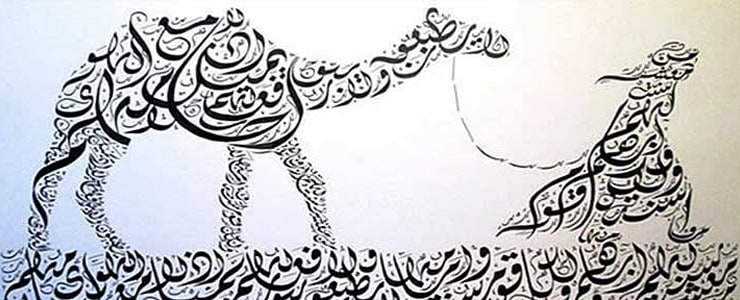 Illustration credit: Everitte Barbee
Illustration credit: Everitte Barbee
This article appeared in the Books and arts section of The Economist print edition under the headline “Out of one, many.” It explains that part of the reason Arabic has such a low profile is that it is not really a single language at all. Excel Translations does not endorse, recommend, or make representations with respect to the following content.
Among their many reverberations, the terrorist attacks of September 11th 2001 had a linguistic side-effect. Between 2002 and 2009 the number of university students in America learning Arabic shot up by 231%, making it a more popular subject than Latin and Russian. This was a “Sputnik moment”: like the Soviet satellite, it shocked Americans into studying their adversaries.
But national attention soon wandered. Arabic-learning declined by 10% between 2009 and 2016—years in which America continued to fight in Iraq and later against Islamic State. In both America and Britain, Arabic is just the eighth-most-studied language, behind less important but somehow sexier ones such as (in British A-level exams) Italian.
Arabic is the fifth-most-spoken language in the world, with more than 313m speakers
It is an official language in 25 countries—more than any other except English and French—and one of six official languages at the United Nations. As the vehicle of one of the great faiths, Islam, it is widely studied for religious reasons. So why does it seem to punch below its weight in the secular world?
Part of the answer is that “Arabic”, today, is not really a single language at all. Scholars call it a “macrolanguage” instead. “Modern Standard Arabic” (MSA) is the medium of serious writing and formal public speech across the Arab world. But Western students who sign up for a class in it soon discover that nobody speaks this “standard” as a native tongue; many Arabs hardly speak it at all. MSA is based on the classical Arabic of the Koran—written in the 7th century—with additional vocabulary for modern life.
But oral languages do not sit still for 14 centuries, and spoken “Arabic” is really a group of dialects different enough to be considered separate languages. They are often put in five approximate categories: north African, Egyptian, Mesopotamian, Levantine and Peninsular Arabic. Speakers from distant regions can struggle to understand each other’s dialects.
The standard version relates to them roughly as Latin does to today’s Romance languages. Consider Syrian Arabic. Some words are identical to their classical progenitors. But some sounds disappear, and others change wholesale: for example, the th sound becomes a d, s, t or z. Some dialectal words are borrowed from European languages, like talifoon (telephone), which is used alongside MSA’S haatif. Others draw on local influences, such as Turkish. In many cases, words change meaning. Haka means to tell a story in MSA, but it just means “to speak” in Syrian dialect. And the grammars are utterly different: the dialects are simpler than MSA, but they must still be learned mostly anew.
The foreigner who wants to both read and speak Arabic, in other words, needs to acquire, if not quite two languages, one and a half. Worse, none of the dialects is big enough to play the role that Mandarin does in the Chinese family. Egyptian has generally been the best-known, thanks to the country’s heft in population and culture. But its native speakers are mostly limited to Egypt, with its stagnant economy and politics. No wonder attrition among learners is high; for every five who take up Arabic, roughly one makes it to advanced classes.
For Arabs, the dialects pose less of an everyday problem than all this might suggest. By improvising, Arabs from different regions do manage to talk to each other. They use features shared across the bigger dialects, as well as bits of MSA, while avoiding the peculiarities of their own dialects as much as possible.
A bigger problem is the nature of MSA.
To read or write, Arabs essentially use a foreign language, one often taught with stultifying conservatism in schools. Some do so happily, proud of its long history, its complex and subtle grammar or its intimate links with Islam. But many ordinary people prefer reading or writing in languages such as French or English. French, supposedly in decline, has a quarter as many native speakers, but quite a lot more clout. To give one approximate measure, there are three times as many articles in French on Wikipedia as in Arabic, with five times as many edits. The Arabic book market is about a quarter the size of Belgium’s.
All this is a shame.
Many Westerners might associate the language with today’s repressive Middle Eastern regimes, but there is far more to Arabic than that. It is the medium of Moses Maimonides’s medieval Jewish philosophy, the novels of Naguib Mahfouz and the songs of Feyrouz. No region, and no people or language, should ever be judged on its politics alone.
Leave a Reply